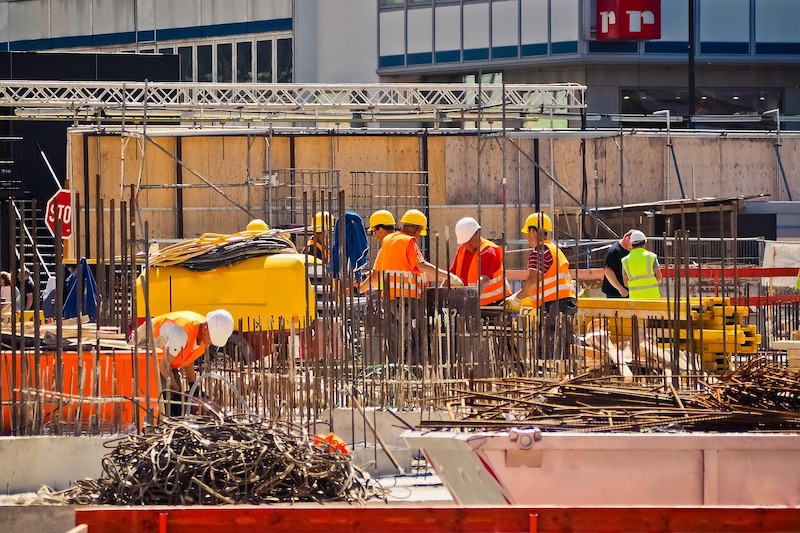Construction employment in January remained below pre-pandemic levels in all but eight states, according to an analysis by the Associated General Contractors of America of government employment data released today, while more firms have reduced headcount than have added to it in the past year, the association’s recent survey shows. Association officials said the jobs figures and survey results underscore the need for federal measures to stem future sector job losses.
“Despite improvement in many sectors of the economy, nonresidential contractors are coping with widespread project cancellations and postponements, soaring materials costs, and lengthening delivery times,” said Ken Simonson, the association’s chief economist. “That combination makes further job cuts likely in many states.”
The survey, which included responses from nearly 1500 firms, found 34% had reduced their employee count in the past year, compared to just 20% that had added employees. More than three-fourths of the firms had experienced project cancellations or deferrals, while only 21% reported winning new projects or add-ons to existing projects in the past two months.
Seasonally adjusted construction employment in January 2021 was lower than in February 2020—the last month before the pandemic forced many contractors to suspend work—in 42 states and was unchanged in the District of Columbia. Texas lost the most construction jobs over the period (-51,900 jobs or -6.6%), followed by California (-36,200 jobs, -4.0%), and New York (-26,000 jobs, -6.4%). Louisiana experienced the largest percentage loss (-14.0%, -19,200 jobs), followed by Wyoming (-9.6%, -2,200 jobs).
Only eight states added construction jobs from February 2020 to January 2021. Idaho added the most jobs (4,500 jobs, 8.2%), trailed by Utah (3,300 jobs, 2.9%), Alabama (6,100 jobs, 6.4%) and Arkansas (1,900 jobs, 3.6%,). Idaho added the highest percentage, followed by Arkansas and Alaska (3.0%, 500 jobs).
From December to January,19 states and D.C. lost construction jobs, 27 states added jobs, and there was no change in Alaska, North and South Dakota, and Wyoming. California had the largest loss of construction jobs for the month (-4,000 jobs or -0.5%), followed by South Carolina (-3,200 jobs, -3.0%) and Illinois (-3,200 jobs, -1.4%). South Carolina had the largest percentage decline, followed by Wisconsin (-2.4%, -3,000 jobs).
Florida added the most construction jobs over the month (3,500 jobs, 0.6%), followed by Texas (0.4%). Vermont had the largest monthly percentage gain (3.4%, 500 jobs), trailed by Idaho (3.3%, 1,900 jobs).
Association officials said demand for construction will continue to suffer amid pandemic-induced economic uncertainty and urged federal officials to enact measures to help stem additional job losses in the sector. These new measures should include new federal investments in infrastructure, ending tariffs on key construction materials, addressing supply chain backups and avoiding costly and unneeded new regulatory burdens.
“The pandemic is driving away projects, contributing to spiking materials prices and helping make delivery schedules unreliable,” said Stephen E. Sandherr, the association’s chief executive officer. “Contractors will not be able to build back better if they have to keep paying higher prices for materials that rarely arrive on time.”
View state February 2020-January 2021 data and rankings and December-January rankings. View AGC’s survey.
Related Stories
Market Data | Nov 30, 2016
Marcum Commercial Construction Index reports industry outlook has shifted; more change expected
Overall nonresidential construction spending in September totaled $690.5 billion, down a slight 0.7 percent from a year earlier.
Industry Research | Nov 30, 2016
Multifamily millennials: Here is what millennial renters want in 2017
It’s all about technology and convenience when it comes to the things millennial renters value most in a multifamily facility.
Market Data | Nov 29, 2016
It’s not just traditional infrastructure that requires investment
A national survey finds strong support for essential community buildings.
Industry Research | Nov 28, 2016
Building America: The Merit Shop Scorecard
ABC releases state rankings on policies affecting construction industry.
Multifamily Housing | Nov 28, 2016
Axiometrics predicts apartment deliveries will peak by mid 2017
New York is projected to lead the nation next year, thanks to construction delays in 2016
Market Data | Nov 22, 2016
Construction activity will slow next year: JLL
Risk, labor, and technology are impacting what gets built.
Market Data | Nov 17, 2016
Architecture Billings Index rebounds after two down months
Decline in new design contracts suggests volatility in design activity to persist.
Market Data | Nov 11, 2016
Brand marketing: Why the B2B world needs to embrace consumers
The relevance of brand recognition has always been debatable in the B2B universe. With notable exceptions like BASF, few manufacturers or industry groups see value in generating top-of-mind awareness for their products and services with consumers.
Industry Research | Nov 8, 2016
Austin, Texas wins ‘Top City’ in the Emerging Trends in Real Estate outlook
Austin was followed on the list by Dallas/Fort Worth, Texas and Portland, Ore.
Market Data | Nov 2, 2016
Nonresidential construction spending down in September, but August data upwardly revised
The government revised the August nonresidential construction spending estimate from $686.6 billion to $696.6 billion.
















